Product
TABLE OF CONTENTs
TABLE OF CONTENT
Customer onboarding is the make-or-break moment in building long-lasting, loyal customers. But too often, it feels like a messy transition process that no team really owns.
When onboarding processes are poorly managed and disjointed, new customers notice—and can send them scrambling to a competitor before the (digital) ink is even dry.
Your customer onboarding software should improve the onboarding experience by:
- Creating standardized, repeatable processes
- Boosting team productivity and collaboration
- Offering a more engaging, organized, and trackable way to connect with customers
But what’s the right tool for you? Let’s find out.
Keep reading for a breakdown of the different types of client onboarding platforms, who they are (and aren’t) right for, and suggestions of our favorite tools on the market.
How to choose the right client onboarding software
Not all customer and client onboarding software is built the same. Here are the biggest differentiators to be aware of when choosing what tool best fits your needs:
High vs. low-touch onboarding tools
The biggest distinction between user onboarding tools is whether they’re built for high- vs. low-touch onboarding.
High-touch onboarding tools are designed for mid- to enterprise-level SaaS customers or service businesses (like agencies) that require one-on-one onboarding.
High-touch tools prioritize communication and client management to provide direct customer support and personalized resources over an extended period of time. The goal is to reduce onboarding complexity and cut time wasted managing admin tasks or could-have-been-an-email meetings.
Low-touch (and no-touch) onboarding tools are more suitable for low-barrier-to-entry SaaS products and self-serve customers. These tools prioritize self-service, automation, and minimizing one-on-one attention.
Customers may choose an onboarding journey that best fits their needs, new resources might be made available at different stages of the onboarding process, or users may take complete control of their onboarding experience with self-service tools.
All-in-one customer success tools vs. onboarding point solutions
An all-in-one customer success (CS) tool sees customer onboarding as just one piece of managing the customer relationship.
All-in-one tools function as a CRM for CS teams, providing a variety of tools and features to oversee the relationship both before and after the customer buys. While an all-in-one tool can help large CS organizations reduce their tech stack, these tools typically sacrifice depth and functionality during the onboarding process.
Alternatively, you could consider a point solution that’s purpose-built for customer onboarding. Its entire function is to help new users see the value of your product, so it often has special features and functions that strengthen that process—rather than trying to be a tool that does everything.
Customer-facing vs. internal-facing software
Customer-facing onboarding tools simplify and manage the experience for your end users. This includes acting as a portal for communication and distributing resources.
Customer-facing onboarding tools (like Dock) deliver value directly to customers. It might consolidate communications, help customers stay on task, offer self-service resources — or in Dock’s case, all of the above.
Internal-facing software improves the backend of the customer onboarding experience to help reduce churn. This might include team communication and collaboration tools, tracking and reporting features, or an internal knowledge base.
Internal-facing tools support CSM teams in managing, organizing, and optimizing the onboarding process. Gainsight, for example, offers customer task management and goal progress tracking, but only for internal teams.
Most tools have both internal- and external-facing features, but any one tool is rarely great for both.
You may need a tool with multiple functionalities and use cases, such as the ability to manage both external and internal processes. Many customer onboarding tools are customizable or can integrate with other popular software, so you can refine your tech stack to address your unique needs.
High-touch onboarding tools
Let's start with high-touch onboarding tools for a human-first approach to educating customers.
High-touch onboarding tools are best for complex onboarding processes, highly technical tools, or for high-paying customers expecting a personalized experience. They prioritize collaboration and communication and offer a hands-on approach to onboarding.
Here are some examples of companies that would benefit from a high-touch onboarding tool:
- SaaS or tech companies with products that require deep knowledge or intricate setup
- Agencies that want to welcome new clients with custom onboarding content
- SaaS companies working to onboard large customer teams
- Companies whose customers need to know the “why,” not just the “how”
These high-touch tools come in three complementary categories:
- Customer onboarding portals
- Knowledge base software
- Customer success enablement tools
Customer onboarding portals
Customer onboarding portals are personalized dashboards or pages that allow customers to quickly and easily access resources, to-dos, meeting notes, and timelines.
Customer onboarding portals are for teams that want to take clunky, complicated onboarding processes and present them to their customers in a more professional, appealing, and easier-to-navigate way.
For example, instead of working in messy Google Drive folders, email chains, or spreadsheets, you can create a customer onboarding portal complete with onboarding checklists, videos, slideshows, images, and more.
Because these portals hold all your onboarding content in one place, they help keep customers and team members aligned around upcoming deadlines, important information, and next steps.
Our top customer onboarding portals are:
1. Dock
With Dock’s customer onboarding portals, customer-facing teams can deliver personalized onboarding experiences at scale. Each customer gets a shared workspace that combines resources, project plans, tasks, and conversations in one link.
With Dock, you can build a personalized onboarding workspace for every customer that combines project plans, checklists, content, and communication—all in one link. Customers know exactly what’s next, and your team gets full visibility into how onboarding is progressing.
Dock gives onboarding teams a lightweight project management system that works for both sides. Use drag-and-drop timelines, Kanban boards, and assigned tasks to create shared accountability. Set relative due dates to scale onboarding plans across hundreds of accounts—without duplicating work.
Here's what Dock makes possible:
- Share demos, guides, and videos alongside implementation checklists.
- Create structured onboarding plans with phases, dependencies, and timelines.
- Assign tasks, set due dates, and collaborate async with comments.
- Track which stakeholders are engaging (and which ones aren’t).
- Save time with reusable workspace templates and AI-generated content.
Most importantly, Dock cuts the friction from your sales-to-success handoff and helps customers reach time-to-value faster. And once onboarding is done, you can transition the same workspace into a long-term client portal—no new tool or link required.
Other standout customer onboarding features include:
- Relative due dates for repeatable onboarding plans.
- Hide-able sections for tailoring content to each customer.
- People analytics to track content engagement and task completion.
- One central content library to eliminate folder sprawl.
Dock helps your onboarding team operate like a product team: scalable, repeatable, and data-driven.
2. Arrows
Arrows is an onboarding solution built directly into HubSpot, making it easy to incorporate your customer onboarding process with the rest of the customer journey. Use forms, embedded actions, due dates, and more to keep your customers on track.
Arrows keeps things simple, presenting HubSpot-based tasks and projects in a cleaner, easier-to-use checklist. Your team can continue working in HubSpot without requiring your customers to know how to use HubSpot as well.
But Arrows’ capabilities don’t extend far beyond simple onboarding flows. If you want to share resources, schedule meetings, or showcase other types of content, you’ll need a second tool. And if you’re not already a HubSpot user, Arrows isn’t for you.
3. RocketLane
RocketLane is a collaborative customer onboarding platform that provides visibility across projects and customers. You can create templates, connect with teams and customers, and improve the client onboarding process in one place.
RocketLane functions similarly to an internal project management tool. It offers all the bells and whistles like activity tracking and analytics, but requires more organization, planning, and oversight from your team.
RocketLane is best for complex onboarding processes or where onboarding tasks require a lot of back and forth with internal teams.
Knowledge base software
Knowledge base software makes it easy to create, optimize, and distribute educational and support materials. It’s organized and searchable, so users can access the resources they need exactly when they need them.
Although knowledge base software is positioned as a self-serve support tool, it is a supplemental resource for high-touch initiatives. Support agents can point customers to relevant content, or AI tools can suggest additional help pages based on what the customer has already engaged with.
Our top knowledge base tools include:
4. Zendesk
Zendesk offers a suite of tools geared toward improving customer service, including a smart knowledge base. In addition to housing all your knowledge materials, Zendesk’s knowledge base uses AI to provide content recommendations, lets you connect information across multiple pages for quick and efficient updating, and links with your help center to make support agents’ jobs easier.
As a knowledge base tool, Zendesk is best for teams with high support traffic or in-depth onboarding processes that need all customer data stored in one place.
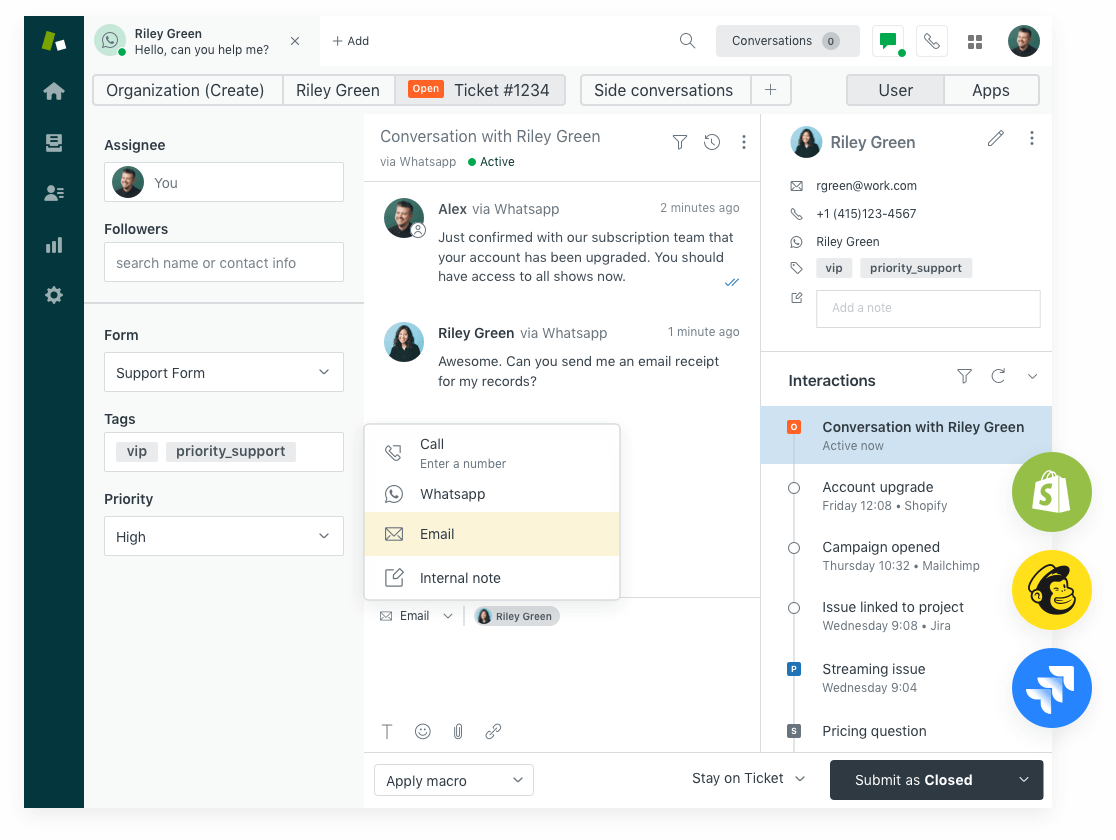
5. Scribe
Scribe is an automated tutorial builder that streamlines the knowledge documentation process. With Scribe, you can quickly create step-by-step instructions just by recording your screen as your team follows workflows as they normally would. You can share your finished guides directly or create Pages to add additional context or create comprehensive instructions with multiple tasks.
Scribe is a great point solution, but it works best when paired with a customer success platform with additional features or more organization. For example, you could embed Scribe into an onboarding portal like Dock to give clear instructions without switching apps.
6. Guru
Guru is an internal knowledge base software that supports your team in doing their job as efficiently as possible. Guru makes knowledge capturing and sharing easy, allowing you to add information from the source, whether that’s Slack or on the web (or anywhere in between).
Guru's AI-powered smart search helps support teams find answers to onboarding questions quickly and accurately, so customers spend less time waiting for responses and more time engaging with your platform.
Customer success enablement tools
Customer success enablement tools support your team in delivering value and improving the customer experience. CS enablement tools are a broad category, but each is designed to make it easier to build long-lasting relationships with your customers.
Here are our favorites:
7. Gong
Gong uses analytics and insights to help your customer success team identify opportunities to boost customer satisfaction or identify risk of churn while there is still time to adjust. With Gong, you can gain visibility into your entire customer journey to learn how to support your users better and ensure you’re meeting their expectations.
Gong is data-heavy, so it requires some skill to make sense of the metrics and numbers it gives you. While it can provide insights and suggestions, your team needs to be comfortable with analytics to see the full value of a tool like Gong.
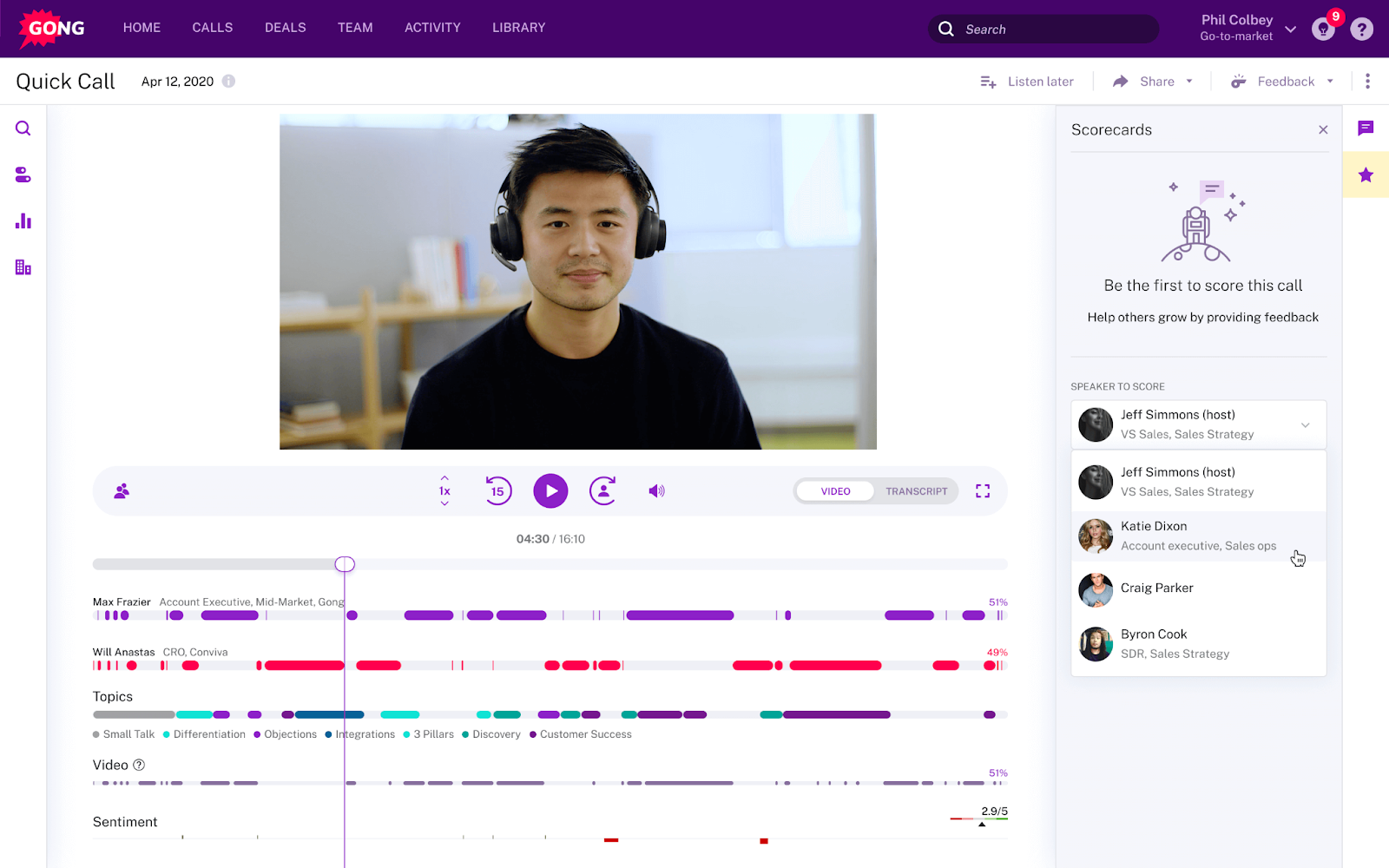
8. Sendoso
Sendoso gets customers excited about your brand by making it easy to send gifts to users to show how much you value them. Use Sendoso to send welcome kits with swag, educational materials, and more.
Sendoso is a great point solution for making a strong first impression—but you’ll of course need to integrate it with a more centralized customer onboarding or success solution.
9. CloudApp
CloudApp makes it easier for your customer support team to answer complicated questions and provide more thorough instructions by simplifying the screen recording process. CS team members can use CloudApp to quickly record a how-to video and share it with customers via email.
You’ll want to pair CloudApp with other software, like a CRM, to get the most benefit.
Low-touch onboarding tools for SaaS
Low-touch onboarding tools rely on software to handle onboarding workflows for you.
Using low-touch tools, including videos and digital tours, you can streamline onboarding by eliminating the need for hands-on manual support.
These types of companies see the most benefit from a low-touch onboarding tool:
- Companies that are scaling quickly and can’t provide high-touch experiences
- SaaS and tech companies with products that are less complex and more intuitive
- SaaS and tech companies with tech-savvy customers
- Companies, including agencies, that want to improve their web experience
Digital adoption platforms
A digital adoption platform integrates with your software applications to walk users through how to get the most out of your product.
While digital adoption platforms are low-touch tools, they can provide a hands-on support feel with automated systems and processes, improving productivity and reducing costs without sacrificing experience.
Our favorites include:
10. Pendo
Pendo is a product adoption platform that uses in-app guides, feedback, and analytics to help you understand your customer journey to improve onboarding, client experience, and feature adoption. Product walkthroughs guide new clients and users through instructions as they engage with the product, giving real-time advice.
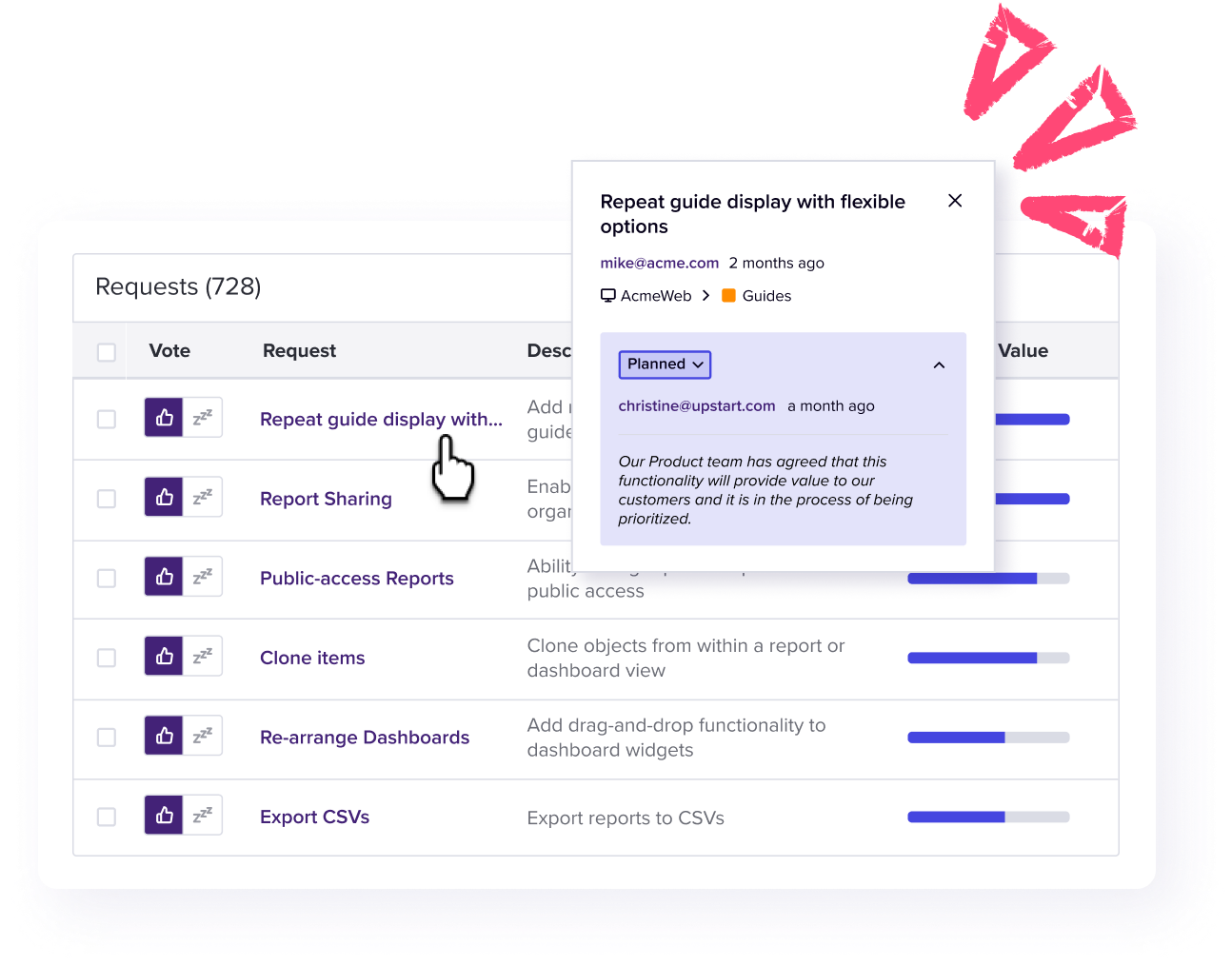
11. AppCues
AppCues lets you design, deploy, and test product-led onboarding experiences and product tours to save your team time and increase user activation and retention. With AppCues, you can personalize experiences for users based on key segments, ensuring each customer gets the onboarding resources they need to be successful.
Other digital adoption platform alternatives to consider are Chameleon and Walkme.
12. Customer.io
Customer.io uses data-driven emails, push notifications, in-app messages, and SMS to help build relationships between brands and customers. As an onboarding tool, Customer.io can help facilitate meaningful conversations, remind customers of tasks to complete, or check in with new users automatically.
Quality Customer.io alternatives include Walnut, UserGuiding, Userpilot, and Userlane.
UX monitoring and testing
User experience is crucial for onboarding new clients. Even with the best onboarding plan, if the product itself is overly complex or confusing, it’ll be nearly impossible to retain high-quality customers.
UX monitoring and testing software help you identify gaps in your product that may push customers away, so you can make improvements.
Our top UX monitoring and testing tools are:
13. Fullstory
Fullstory monitors your entire digital experience to monitor users across your website, mobile app, and software platform. Find the root causes of issues with your digital experience so you can improve your overall onboarding experience and deliver a user-friendly interface.
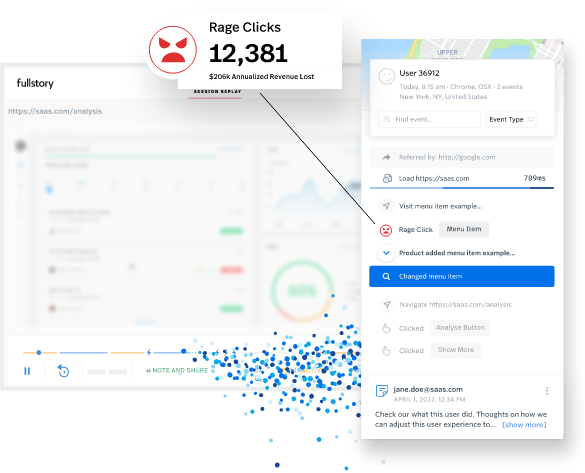
14. Mixpanel
Mixpanel lets you track product usage to see which features are driving adoption to better engage and retain your customers by constantly improving your onboarding process. Mixpanel analyzes engagement patterns to give you the user data you need to make smarter customer onboarding and training decisions.
15. Hotjar
Hotjar shares insights about your website that traditional analytics platforms can’t. Discover where your visitors are getting bored with your content or where they’re giving the bulk of their attention. When you identify your problem areas, you can make strategic decisions to eliminate them completely.
Customer support ticketing tools
Most customer onboarding experiences require a balance of high-touch and low-touch interactions. Customers may want the ability to self-service when they can, but also know human support is available should they run into any complex problems.
Here are the most popular customer onboarding tools for handling customer support requests at any scale:
16. HelpScout
HelpScout manages all customer conversations in one shared platform. Deliver cross-channel support, including email and chat, all within the same platform. Store and distribute self-service options to support customers’ education on their own time, and use actionable insights and detailed reporting to improve your customer experience.

17. Intercom
Intercom uses high-touch and low-touch tools to engage customers when they’re most likely to act. Multi-channel engagement campaigns help you stay connected with new customers so their experience is consistent as they move through the onboarding journey.
18. Zendesk (again)
Zendesk is making our list for a second time, but for good reason. In addition to a knowledge base, Zendesk is a service CRM, shared inbox, and integrated help center that makes it easy to connect with customers where they are. Zendesk also offers multiple integrations to make your user experience unique and cover all your bases during the onboarding process.
AI tools for customer onboarding
AI is already reshaping CS and how CSMs work. AI tools in the customer onboarding process can reduce friction, improve productivity, and lead to better overall experiences.
We did a deep dive on AI tools transforming CS, but here are our top picks for using AI during onboarding:
19. Dock AI: Convert conversations with customers into resources you can use. Instantly generate recaps, customer success plans, checklists, and more—right in your Dock workspace — using call transcripts.
20. ChatGPT: ChatGPT (or your other favorite LLM) can act as an AI assistant for your CSMs. Use it to draft emails, structure content, or get support responses. Build custom ChatGPT bots using brand style guides, knowledge base materials, and other internal resources to maintain consistency and accuracy.
21. Otter: Otter is an AI Meeting Agent that records and transcribes meetings and automatically creates summaries, takeaways, and action items. It can even revisit previous conversations to quickly answer questions both in chat and during live calls.
22. ChurnZero: ChurnZero is an all-in-one customer success tool that uses AI to track customer health. Automatically create relationship maps, engagement summaries, and sentiment analysis to identify (and solve) customer problems faster.
23. Guru: We talked about Guru earlier, but it’s worth mentioning again. The AI knowledge management platform with smart search capabilities makes finding the right information at the right time easier than ever.
24. Cust.co: Cust AI agents are designed to support CSMs throughout the entire customer journey. During onboarding, that means collecting info from customers about their goals, success metrics, and more.
All-in-one customer success tools
If onboarding isn’t a big concern for you and you’d rather go with a general customer success tool to cover the onboarding use case, rather than going with a more purpose-built solution, there are plenty of all-in-one tools on the market.
Popular all-in-one CS tools include:
25. ChurnZero
27. Gainsight
28. Vitally
30. Totango
Simplify and scale customer onboarding with the right tools
The onboarding software you use shouldn’t make your life harder. Save your team and your customers time (and headaches) with a flexible, comprehensive platform like Dock.
We even have a free, pre-built customer onboarding template to help you get started. Customize, edit, or start from scratch with 50 free workspaces.




















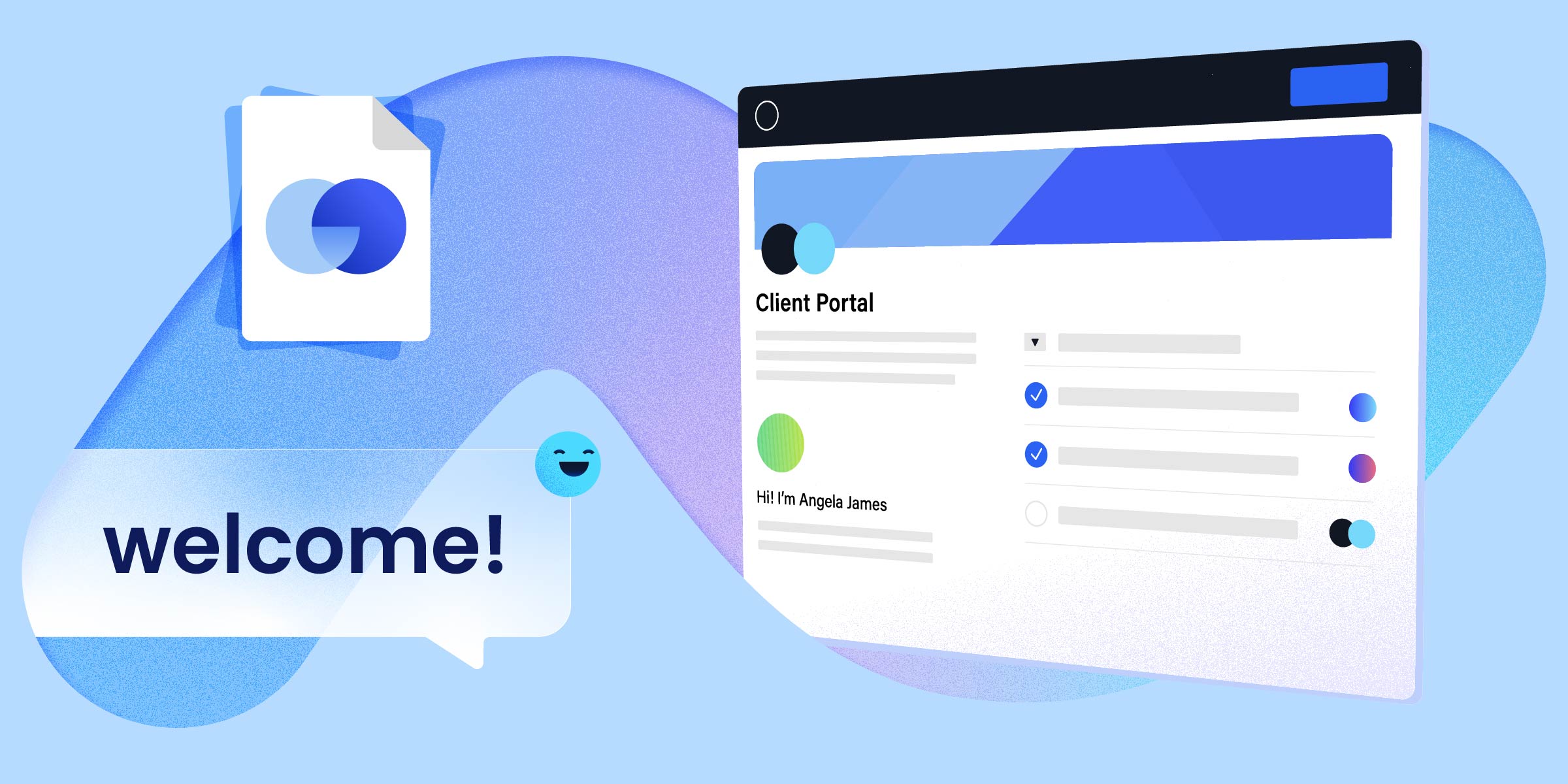







.webp)









